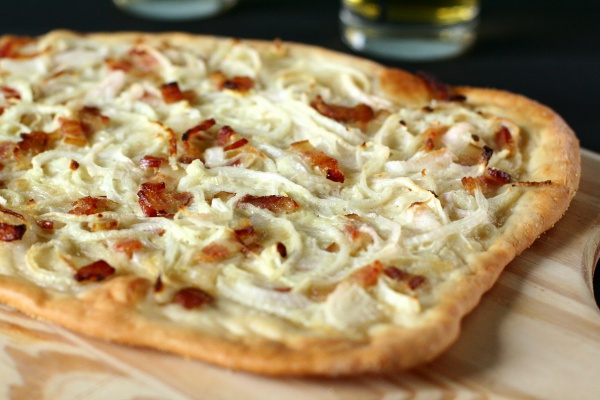Facts About Tarte flambée
Flammkuchen, also known as tarte flambée, is a delectable dish originating from the historic regions of Alsace, Saarland, Baden, and Pfalz, straddling the French-German border. This regional specialty features thinly rolled bread dough, typically shaped into a rectangle or oval. It's topped with creamy fromage blanc or crème fraîche, thinly sliced onions, and savory lardons (bacon pieces).
The name "Flammkuchen" translates to "pie baked in the flames" though it is not actually flambéed. Instead, it’s traditionally cooked in a wood-fired oven. Local dialects offer various names for the dish, such as Flàmmeküeche, Flàmmaküacha, or Flammekueche in Alsatian, and Flammkuche in Lorraine Franconian.
There are several delicious variations of the original Flammkuchen recipe:
- Gratinée: Topped with Gruyère cheese.
- Forestière: Includes mushrooms.
- Munster: Made with Munster cheese.
- Sweet Version: A dessert option featuring apples, cinnamon, or blueberries, often flambéed with Calvados or another sweet liqueur.
Flammkuchen has its roots with Germanic farmers who would bake bread weekly. Originally a homemade dish, it became popular in urban restaurants during the 1960s when pizza was gaining widespread popularity. Farmers would use Flammkuchen to test the heat of their wood-fired ovens, baking the dish when the oven was at its hottest. After Alsace was annexed by France, Flammkuchen made its way into French cuisine as tarte flambée.
Cooking Flammkuchen involves pushing aside the embers in a wood-fired oven to make space for the dough. Baked for just one or two minutes, it emerges with a thin, crispy crust and a slightly charred border, much like a pizza. It’s a delightful treat that captures the rustic charm and culinary traditions of its region.

 Belgium
Belgium